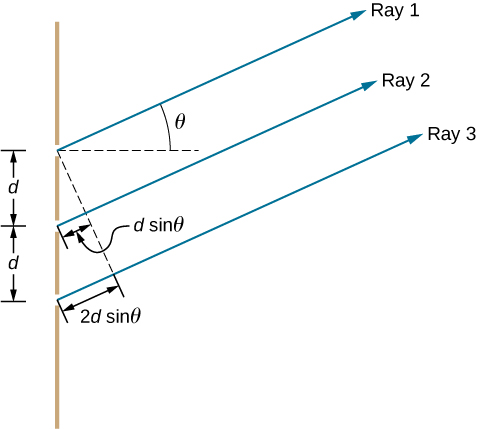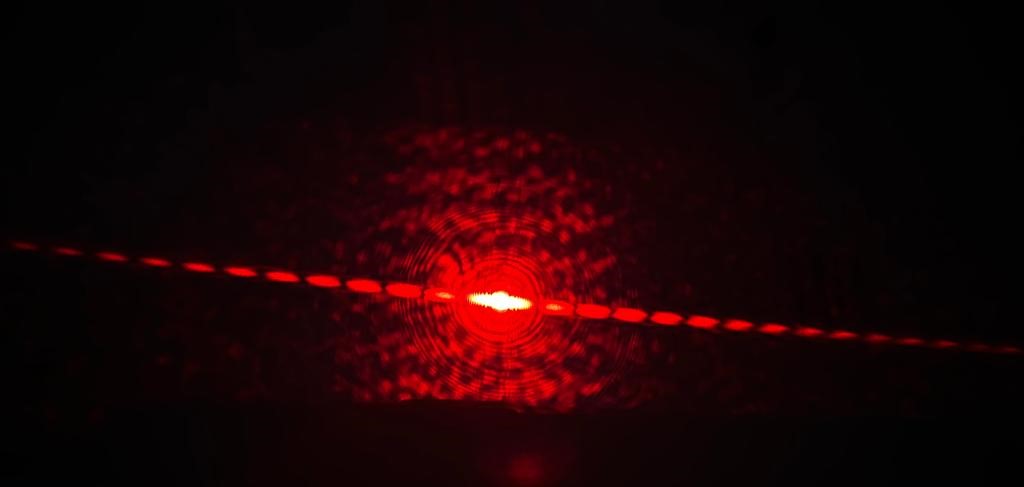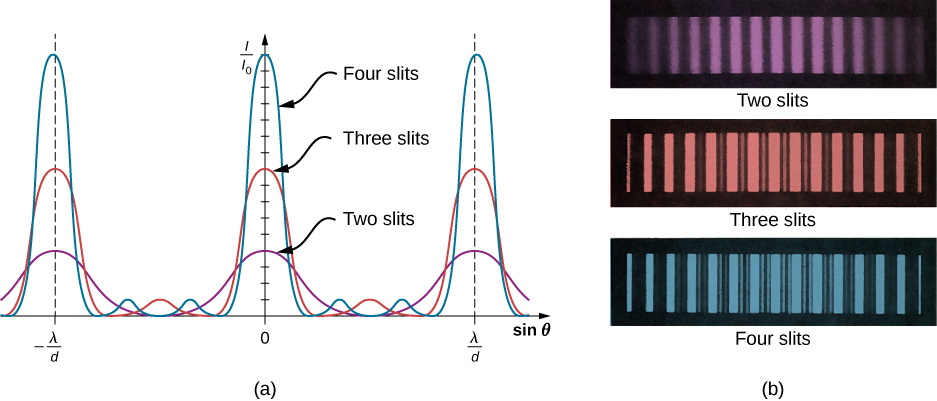🠕
Theory
Multiple-slit diffraction is a phenomenon of waves. An important property of a wave is its wavelength.
The wavelength is the distance over which the wave makes one full cycle.
In the figure, the wavelength (λ), is shown as the distance between the peaks of the wave.
Diffraction is the spreading out of waves as they pass the edge of an obstacle or pass
through a small opening.
All kinds of waves experience diffraction:
e.g., water waves, sound waves, and electromagnetic waves (which includes light).
When waves in the ocean hit a linear breakwater from the side,
they bend around the end of the breakwater.
When light passes through a thin slit, it spreads out on the other side.
The diffraction of a wave through a small hole can be explained using Huygens' principle.
In the late 1600s, Christian Huygens proposed that each point on a wavefront
can be treated as the source of a new spherical wave.
Consider what happens when a wavefront hits a barrier with a very thin hole in it.
From the point of the hole, a new spherical wave is created on the backside of the barrier.
Now consider waves hitting a thin slit, as shown in the figure.
The waves are coming down from the top in the figure.
Suppose that the black lines represent the wave peaks and the white lines represent the wave troughs.
Within the gap of the slit, the yellow dots represent points at which new circular waves are produced.
Note that the new circular waves overlap with one another.

The wavelength is the distance over which the wave makes one full cycle.
In the figure, the wavelength (λ), is shown as the distance between the peaks of the wave.
Diffraction is the spreading out of waves as they pass the edge of an obstacle or pass
through a small opening.
All kinds of waves experience diffraction:
e.g., water waves, sound waves, and electromagnetic waves (which includes light).
When waves in the ocean hit a linear breakwater from the side,
they bend around the end of the breakwater.
When light passes through a thin slit, it spreads out on the other side.
The diffraction of a wave through a small hole can be explained using Huygens' principle.
In the late 1600s, Christian Huygens proposed that each point on a wavefront
can be treated as the source of a new spherical wave.
Consider what happens when a wavefront hits a barrier with a very thin hole in it.
From the point of the hole, a new spherical wave is created on the backside of the barrier.
Now consider waves hitting a thin slit, as shown in the figure.
The waves are coming down from the top in the figure.
Suppose that the black lines represent the wave peaks and the white lines represent the wave troughs.
Within the gap of the slit, the yellow dots represent points at which new circular waves are produced.
Note that the new circular waves overlap with one another.



